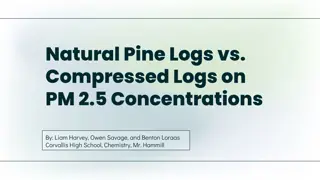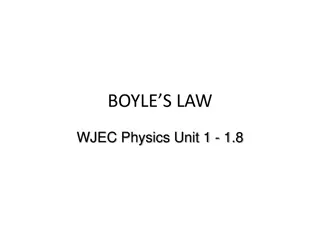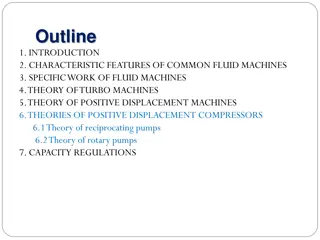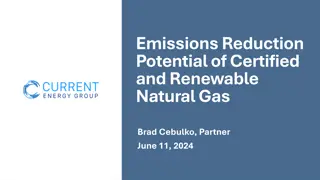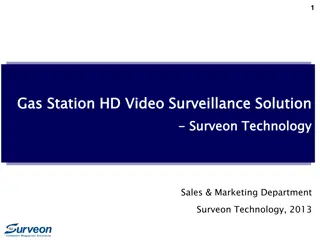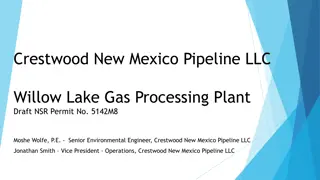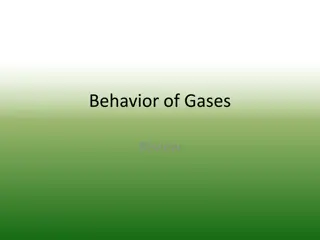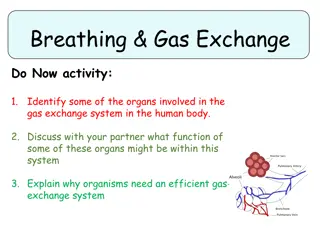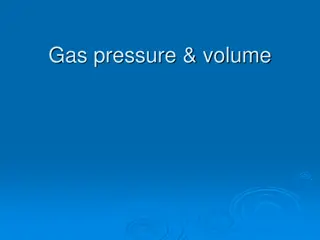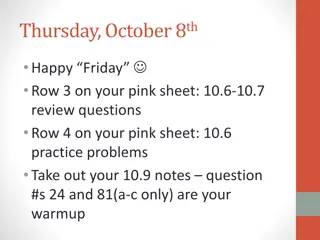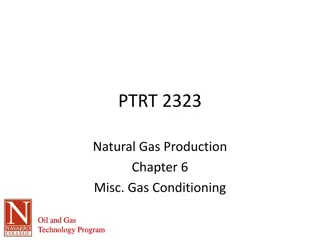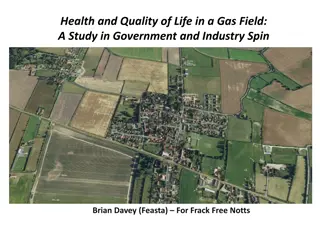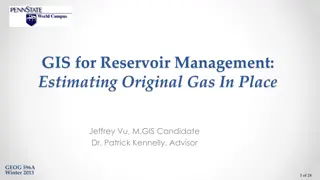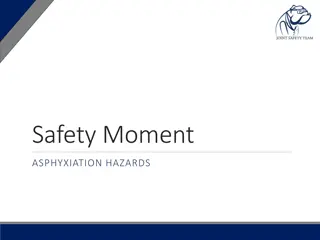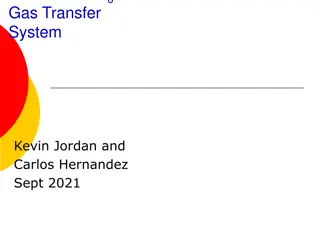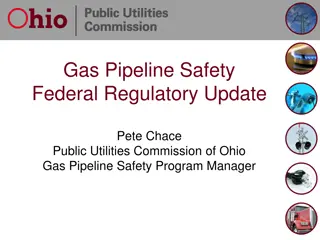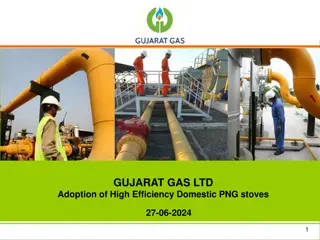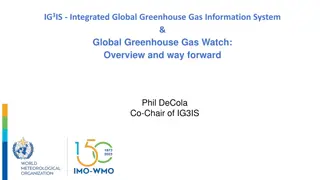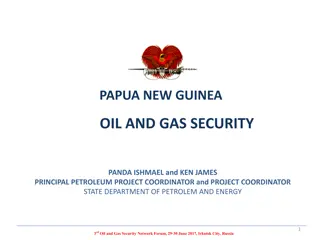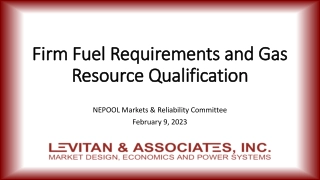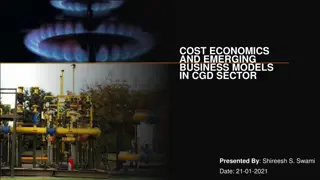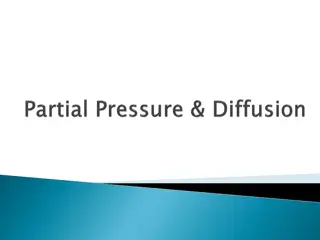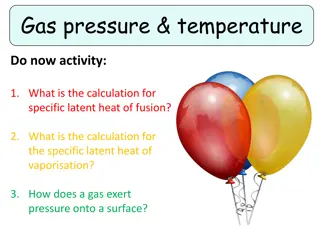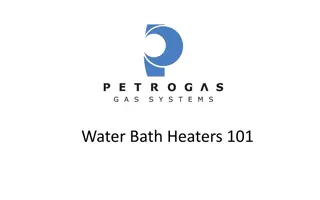Compressed Gas Safety Training Overview
This presentation covers various aspects of compressed gas safety including regulations, handling, storage, emergency response, and gas properties. It emphasizes the importance of proper use, storage, and handling of compressed gases to ensure safety in industrial, medical, and citizen applications.
Download Presentation

Please find below an Image/Link to download the presentation.
The content on the website is provided AS IS for your information and personal use only. It may not be sold, licensed, or shared on other websites without obtaining consent from the author. Download presentation by click this link. If you encounter any issues during the download, it is possible that the publisher has removed the file from their server.
E N D
Presentation Transcript
Compressed Gas Safety Bureau of Workers Compensation PA Training for Health & Safety (PATHS) OSHA 29 CFR 1910.101 Compressed Gases (General Requirements) & OSHA 29 CFR 1910.253 Oxygen-fuel gas Welding & cutting Safe Use, Handling and Storage PPT-043-01 1
Topics Pressure Relief Valves Violent Reactions Handling & Storage Inspections Emergency Response Assist Standards Bibliography Regulations Uses Properties & Examples Compressed Gas Liquefied Gas Cryogenics Terms & Behavior Containers & Markings PPT-043-01 2
Regulations Regulations for use, storage and handling will be according to the AHJ (Authority Having Jurisdiction In the absence of codes, the following may provide guidance: o Compressed Gas Association o NFPA (National Fire Protection Association) o Safety Data Sheet (formerly Material Safety Data Sheet) PPT-043-01 3
Other Sources For determining hazards and for planning purposes: NIOSH Pocket Guide to Chemical Hazards 2012 Emergency Response Guidebook PPT-043-01 4
Uses Industrial uses include: processes, heating, forklifts. Industrial gases may also have other gases added for process purity Medical gases are blends of several gases Vehicles converted from gasoline or diesel Citizen use for heating PPT-043-01 5
Gas Properties Gases can be: o Flammable o Non-Flammable o Oxidizers o Corrosive o Asphyxiants o Poison o Inert Or a mixture PPT-043-01 6
Physical States Gas In Cylinder Temperature +70 to +32F in gaseous state +32 to -130 in liquefied state -130 to -432 refrigerated liquefied gas Compressed Gas Liquefied Gas Cryogenic Liquid Storage temperatures are gas-dependent PPT-043-01 7
Compressed Gas Examples Vapor Types Hazard Class Density Methane 2.1 Fl 0.55 Ethane 2.1 Fl 1.04 Propane 2.1 Fl 1.52 Butane 2.1 Fl 2.0 Nitrogen 2.2 Non-Fl 0.96 Oxygen 5.1 Ox 1.1 Arsine 2.1 FL/2.3 PG 2.69 Chlorine 2.2 NFl/2.3 PG 2.48 LEL/UEL 5-15% 3-12.4% 2.2-9.5% -56 1.8-8.4% Inert NF/Oxidizer ------ 4.5-64% Oxidizer Flashpoint (F) -306 -211 -101 ------ ------ ------ Fl=Flammable NFl=Non-Flammable PG=Poison Gas Ox=Oxidizer PPT-043-01 8
Definitions Gas: State of matter in which material has a very low density and viscosity Can expand and contract in response to temperature and pressure changes Easily diffuses into other gases; distributes itself inside a container If the temperature is dropped and pressure increased, the gas can be changed to a liquid or semi-solid state PPT-043-01 9
Compressed Gas Material or mixture having in the container an absolute pressure exceeding 40 psi at 70oF or, regardless of pressure at 70oF, having an absolute pressure exceeding 104 psi at 130oF or any liquid material having a vapor pressure exceeding 40 psi absolute at 100oF as determined by ASTM Test D- 323 page 597, CGA Handbook, 3rd Edition PPT-043-01 10
Liquefied Petroleum Gas LP Gas or LPG Any material with a vapor pressure not exceeding that allowed for commercial propane Composed predominantly of the following hydrocarbons, either by themselves or as mixtures: propane, propylene, butane (normal butane or isobutene), and butylenes PPT-043-01 11
Liquefied Natural Gas Also called LNG A fluid in the cryogenic liquid state that is composed predominantly of methane. PPT-043-01 12
Cryogenic Liquid Cryogenic liquid: Refrigerated liquefied gas with normal boiling point below -130oF Hazards include those of the gas, frostbite and asphyxiation if breathable oxygen in air is displaced PPT-043-01 13
Terms Boiling Point: Temperature when a gas converts from its liquefied state to vaporous state Critical Pressure: Temperature above which a gas cannot be liquefied by pressure alone PPT-043-01 14
Triple Point The only temperature and pressure at which three phases (gas, liquid, and solid) in a one-component system can exist in equilibrium PPT-043-01 15
Compressed Gas Terms Vapor Density (Gas Specific Gravity): A comparison of the weight of the gas to air (1.0). Heavier-than-air gases will have a vapor density greater than 1.0; lighter gases will have a vapor density less than 1.0 PPT-043-01 16
TLV-TWA TLV-TWA (threshold limit value-time weighted average): Given in ppm (parts per million). Exposure amount which most people can work in for an 8 hour day without suffering harmful effects PPT-043-01 17
IDLH IDLH: Immediately Dangerous to Life and Health. Amounts to which persons should not be exposed due to their harmful effects. Sources for determining these limits will be found on the SDS, as well in various guides, i.e. NIOSH Pocket Guide to Chemical Hazards PPT-043-01 18
LEL Lower Explosive Limits (LEL) also known as lower flammable limits (LFL): least percentage of a gas, mixed with the proper proportions of air, whereby having the necessary heat applied, combustion may result PPT-043-01 19
UEL Upper Explosive Limits (UEL) also known as upper flammable limits (UFL): greatest percentage of a gas, that when proportioned with air, may permit sustained combustion PPT-043-01 20
Flammable Limits Flammable Limits also known as the Flammable Range: percentage of gas within the LEL and UEL where combustion may occur and be sustained Shown: Hydrogen approximated (4%-75%) PPT-043-01 21
Ignition Temperature Ignition Temperature: Unique to various solids, vapors and gases, the requisite heat from an open flame source required to ignite materials. Autoignition temperature is the temperature required to ignite materials absent an open flame source PPT-043-01 22
Inert Gas Gas which does not react with other materials (e.g. argon, helium, neon) Can be an asphyxiant which reduces the amount of breathable air in a location Used in fire suppression systems, purging and cleaning PPT-043-01 23
Expansion Rate (or Ratio) Conversion of cubic feet of liquid to cubic feet of gas Can result in achieving the LEL or Flammable Limits in an inside environment Can also result in the toxic levels or IDLH for a gas expressed as percentage by volume or ppm (parts per million) PPT-043-01 24
Expansion Rate Gas Expansion Rate Methane 625:1 Propane 270:1 Butane 284:1 Nitrogen 696:1 Oxygen 860:1 Chlorine 444:1 PPT-043-01 25
Gas Laws of Gas Behavior Boyle s Law: Decrease container s volume by Temperature and amount of gas remain constant Pressure will double PPT-043-01 26
Gas Laws Charles Law oWhen the temperature increases, the volume increases oPerhaps the container won t be able to handle the volume increase PPT-043-01 27
PVT Relationship If temperature of a gas increases in cylinder, volume of cylinder can not be increased Pressure increases and may activate relief valve Too rapidly increasing pressures may rupture cylinder PPT-043-01 28
Rule of Thumb Increase gas temperature 500 degrees = double pressure Increase gas temperature 1,000 degrees = triple pressure Increase gas temperature 1,500 degrees = quadruple pressure (Some gas cylinders do NOT have a pressure relief valve, could be a catastrophic rupture!) PPT-043-01 29
Cryogenic Heat expands a gas If we pressurize a gas while cooling it, we can turn a gas into a liquefied gas Further cooling and pressure may convert it to a cryogenic gas This increases the amount of product that can be put in a cylinder PPT-043-01 30
Gas Containers Lecture Bottles Cylinders Tank Trucks PPT-043-01 31
Gas Containers Railroad Tank Cars Portable Tanks Fixed Storage Pipelines PPT-043-01 32
Cylinders Construction Must be compatible with the material contained Markings Labeling required to identify the gas in storage and during shipment PPT-043-01 33
Markings oNomenclature related to the cylinder and its contents will assist in the safety process oLow Pressure: Below 900 psi oHigh Pressure: 900 psi or greater PPT-043-01 34
Storage Pressure Types Storage Pressure (PSI) up to 6000psi 544 109.7 31 Ignition Temperature 999F 959 871 761 Methane Ethane Propane Butane Nitrogen 2,000/below 200 as cryogen Inert Oxygen 2,000/below 200 as cryogen Inert Arsine 219.7 (*see note) *Note: Arsine has no given Ignition Temperature but decomposes into arsenic and hydrogen between 446 F to 464 degrees F PPT-043-01 35
Color Codes Cylinder shells can also be color coded to better identify the contents permitted into the specific type of cylinder This eliminates cross- contamination by introducing non- compatible gases into non-specification cylinders PPT-043-01 36
Medical Gas Color Codes Medical gases will often be a blend of a parent gas with fractions of other gases introduced for purity and stability PPT-043-01 37
Labels FTSC Code Standard numerical code for a gas indicating: Flammability Toxicity State of the gas Corrosiveness CGA V-7 pamphlet provides more in-depth information. PPT-043-01 38
Diaphragm Valve Diaphragm Valve better retains the cylinder contents Not as prone to leakage as the packed valve Note the diaphragm s location Note also the relief valve s location in the product line PPT-043-01 39
Packed Valve The Packed Valve has packing between the upper stem and bonnet This type is known for leaking through the packing Often the leak may be secured by tightening the bonnet nut PPT-043-01 40
Pressure Relief Valve (PRV): May be pressure, temperature or spring activated to permit container contents to escape thereby averting a container rupture The PRV is in the product line PPT-043-01 41
Fusible Plug/Combination Fusible plug melts at a designated temperature and permits the product of a cylinder to be released to avert a catastrophic rupture Combination relief: One with a rupture disk and fusible plug Both are Non-resealing PPT-043-01 42
Rupture Disk oRupture disk (frangible disk) - Operating part of a PRV: ruptures at a predetermined pressure allowing cylinder contents to escape oNon-resealing oPoison gas cylinders do not have a PRV Depending on their classification PRVs are prohibited PPT-043-01 43
Cylinder Hazards Material Hazards oFlammability oSpontaneously Flammable (arsine, silane and phosphine) oCorrosivity oReactivity oPoison oCarcinogenic Container Behavior oFrostbite oRupture oRocketing oBLEVE (Boiling Liquid Expanding Vapor Explosion) PPT-043-01 44
BLEVE: Boiling Liquid Expanding Vapor Explosion A cylinder or tank is heated. Contents absorb heat and convert to pressurized vapor. Relief valve activates. Pressure increases beyond the PRV capacity. Container, thermally stressed, violently ruptures. If the gas is flammable, the fireball is devastating. PPT-043-01 45
BLEVE BLEVEs can occur with liquefied nitrogen and helium or refrigerants and cryogens as well as LP Gas or LNG The Pressure, Volume, Temperature relationship drives the BLEVE PPT-043-01 46
BLEVE Cylinder exploded inside a building Cylinder exploded outside May occur with Liquefied Petroleum Gas (LPG) Propane and Butane being main components or with Liquefied Natural Gas (LNG) of which Methane is the largest component PPT-043-01 47
Railroad Tank Car BLEVE Crescent City, Illinois, June 21, 1970, 7:30am. Train No. 20 derailed involving 3 tank cars BLEVE was 34,000 gallons of Propane Emergency planning paid off PPT-043-01 48
Fixed Location BLEVE 65,000 gallons of propane at bulk storage location in Canada, 2008 PPT-043-01 49
Hydrocarbon Gases Contain flammable hydrogen and combustible carbon in their make-up. oFlammable oNon-Corrosive oNon-Toxic oColorless Examples include: oPropane and oButane PPT-043-01 50


